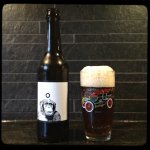Hi!
I'm new to this forum, to brewing and to BeerSmith, so I hope you'll bear with me if I'm doing the obnoxious newbie thing and asking questions to which I should already know/easily find the answers. In that case, please accept my apologies beforehand!
So, to business:
Background: I'm trying to figure out the software, which seems just amazing, but would like to know that it works for me before buying it. I'll be boiling (from extract) in a 10 L (2.6 Gal) pot, so I chose the 11.4 L (3 Gal) pot in the program as it was closest. Now, trying to make a 22 L batch (5.8 Gal), the estimated pre-boil volume is automatically set to 11.9 L, which there obviously isn't room for in my pot. Unticking "Calc Boil Vol" lets me enter my own value there, but if I go for say 8,5 L, the "Bitterness" gets messed up. (From 35.8 to 25.7 IBUs.)
Am I misunderstanding something here? Is the bitterness really affected so much from a slightly smaller amount in the boil, and slightly more water added later to the final wort size? Or have I misunderstood the concepts here in some way?
...
Also, on another note, is there a way to export the inventory so I can share it with my brewing pal? (And my other computer.)
Thanks in advance for any replies you might have for me!
Best regards,
Kalle
I'm new to this forum, to brewing and to BeerSmith, so I hope you'll bear with me if I'm doing the obnoxious newbie thing and asking questions to which I should already know/easily find the answers. In that case, please accept my apologies beforehand!
So, to business:
Background: I'm trying to figure out the software, which seems just amazing, but would like to know that it works for me before buying it. I'll be boiling (from extract) in a 10 L (2.6 Gal) pot, so I chose the 11.4 L (3 Gal) pot in the program as it was closest. Now, trying to make a 22 L batch (5.8 Gal), the estimated pre-boil volume is automatically set to 11.9 L, which there obviously isn't room for in my pot. Unticking "Calc Boil Vol" lets me enter my own value there, but if I go for say 8,5 L, the "Bitterness" gets messed up. (From 35.8 to 25.7 IBUs.)
Am I misunderstanding something here? Is the bitterness really affected so much from a slightly smaller amount in the boil, and slightly more water added later to the final wort size? Or have I misunderstood the concepts here in some way?
...
Also, on another note, is there a way to export the inventory so I can share it with my brewing pal? (And my other computer.)
Thanks in advance for any replies you might have for me!
Best regards,
Kalle

